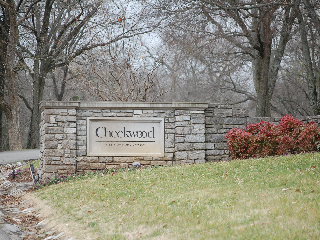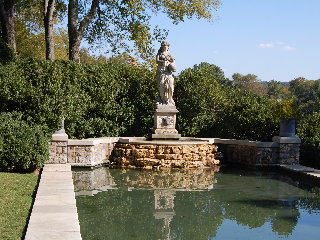
The history and development of Cheekwood Botanical Gardens and Art Museum is closely related to the history, financial development, and success of the city in which it is located--Nashville, Tennessee.
During the late 1800’s, Christopher T. Cheek and his son, Leslie Cheek, were partners in the wholesale grocery business. A cousin, Joel Cheek, developed a coffee that was marketed through and became associated with Nashville’s most famous hotel, The Maxwell House.
The brand did extremely well and was sold in the late 1920’s for a large amount of money. Leslie Cheek and his wife, Mabel Wood, who had been investors in the company, used some of their fortune to develop and build the home and gardens that came to bear their name(s)--Cheekwood.
The family and their offspring lived in the home until the 1950’s, when the house and grounds were sold and came to be established as the current botanical gardens and art museum--now open to the public for tours, lectures, classes, art exhibits, and a variety of hands-on and interactive learning experiences.
Structures on the grounds now house the 30,000 square foot art museum and a dining area, the Pineapple Room Restaurant, also accessible to public visitors.
The Cheekwood Botanical Gardens is actually a series of gardens with different themes that occupy the more than 55 acres on the site.
The original gardens that surround the home are still planted in boxwoods and wisteria, grand plants that were the mainstay of well-landscaped mansions of the time period during which Cheekwood was developed.

Other areas on the grounds have been developed along central themes of the plantings and structures that bear their names--the herb garden, the perennial garden, the water garden, the Japanese garden, and the dogwood gardens are good examples.
One remarkable garden is the Carell Woodland Sculpture Trail, a walking path more than one mile long that meanders through native woodlands with sculpted works of art displayed along the way.
The Carell Dogwood Garden contains a number of dogwoods that provide a spectacular springtime show of blossoms beneath the towering oak and hackberry trees. In the fall, the dogwoods display a brilliant sea of red foliage nestled underneath the larger sheltering hardwood trees and pine trees.
The herb garden offers a visual and olfactory display of a variety of herbs used in cooking and food preservation, in addition to plants used to make fabric dyes, and for other present and past household purposes.
The Japanese Garden provides a flowing and tranquil experience that moves you along through the majestic bamboo forest and into an area that contains a symbolic lake (made of raked gravel) that is dotted with symbolic “islands” of granite.
This garden area also contains strikingly beautiful and graceful Japanese maple trees.
 The history and development of Cheekwood Botanical Gardens and Art Museum is closely related to the history, financial development, and success of the city in which it is located--Nashville, Tennessee.
The history and development of Cheekwood Botanical Gardens and Art Museum is closely related to the history, financial development, and success of the city in which it is located--Nashville, Tennessee.
 Other areas on the grounds have been developed along central themes of the plantings and structures that bear their names--the herb garden, the perennial garden, the water garden, the Japanese garden, and the dogwood gardens are good examples.
Other areas on the grounds have been developed along central themes of the plantings and structures that bear their names--the herb garden, the perennial garden, the water garden, the Japanese garden, and the dogwood gardens are good examples.